I’ll give you 16 practical personal branding exercises especially designed for busy independent professionals like you.
Each exercise includes:
a quick win you can implement today
a simple guide
examples
common mistakes to avoid
and a straightforward checklist
=== Part 1: Making This Stuff Actually Happen ===
Exercise 1: The Real-Life Implementation Plan
Most people never implement what they learn. This exercise helps you create a doable plan that fits into your busy schedule.
📌 QUICK WIN
Block just 30 minutes on your calendar for tomorrow to implement one small branding task. Label it “Client Attraction Work” to remind yourself why it matters.
Guide: Your 90-Day Plan
| Week | What to Work On | Time Needed | When to Do It |
|---|---|---|---|
| Weeks 1-2 | Who your best clients are | 3-4 hours/week | Tuesday mornings |
| Weeks 3-4 | How you’re different | 3-4 hours/week | Tuesday mornings |
| Weeks 5-6 | Your core message | 3-4 hours/week | Tuesday mornings |
| Weeks 7-10 | Creating simple content | 4-5 hours/week | Tuesday mornings |
| Weeks 11-12 | Getting in front of clients | 3-4 hours/week | Tuesday mornings |
| Every week | Building helpful relationships | 1-2 hours/week | Friday afternoons |
Example
BEFORE: Business coach Tom kept learning about branding but never implemented anything because he was “too busy with client work.”
AFTER: Tom blocked Tuesday mornings from 8-12 for brand-building. He worked through one exercise at a time, implementing each fully before moving to the next. Within 3 months, he had completely refreshed his personal brand and started attracting better clients.
⚠️ Common Mistakes
Trying to do everything at once
Not putting brand work on your actual calendar
Giving up when you don’t see instant results
Letting client emergencies always take priority
Implementation Checklist
Look at your calendar and find a regular time slot for personal brand work
Block that time for the next 12 weeks
Decide which exercise will help your business most right now
Find an accountability buddy who will check on your progress
Set a reminder to review your results every month
–
Timeout Before We Move to Part 2
If you’re a coach, consultant, or course creator, your personal brand directly affects how many clients you get and how much you can charge.
Think of your personal brand as your professional reputation.
When potential clients look you up online, what do they find? Do they see a clear message about how you can help them? Or do they see a confusing mix of information?
B2B buyers spend 70% of their buying journey doing independent research before talking to vendors (Source). This is why your personal brand is so important.
–
=== Part 2: Understanding What Clients Actually Want ===
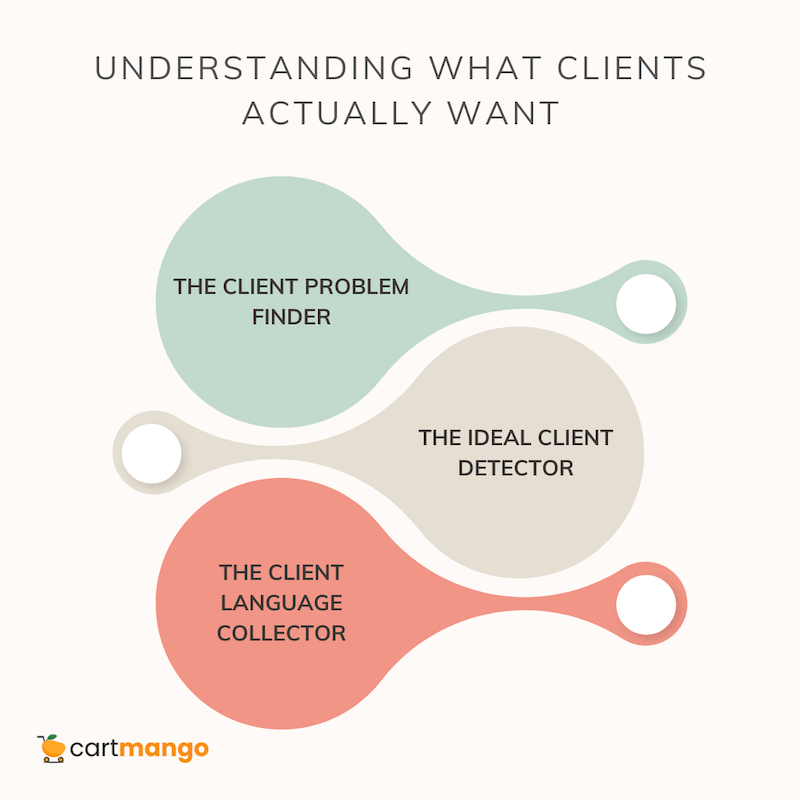
Exercise 2: The Client Problem Finder
Your brand needs to focus on solving real problems people will pay for. This exercise helps you identify exactly what clients want from you.
📌 QUICK WIN
Call two past clients and ask: “What problem were you trying to solve when you hired me?” Their answers will show you what clients really value.
Guide: Problem-Solution Chart
| Client Problem | Your Solution | The End Result | How They Describe It |
|---|---|---|---|
| What keeps them up at night | How you fix it | Measurable improvement | Their exact words |
| Another big worry | Your approach | Specific outcome | Their language |
| Ongoing challenge | Your method | Clear results | What they say |
Example
BEFORE: Business coach Mark called himself “a strategic business consultant helping entrepreneurs maximize potential and optimize growth opportunities.”
AFTER: Mark now says “I’m The Cash Flow Coach who helps service businesses stop the feast-or-famine cycle and create steady $15K months.”
Notice how the “after” version speaks directly to a specific problem using simple language that clients actually use.
⚠️ Common Mistakes
Using fancy words instead of simple language
Talking about your credentials instead of client results
Creating a brand that sounds impressive but confuses potential clients
Being too vague about what problems you solve
Implementation Checklist
List the top 3 problems you consistently solve for clients
Write down the before/after changes your clients experience
Collect exact phrases clients use to describe their problems
Create a simple statement: “I help [specific clients] to [solve specific problem] so they can [achieve specific result]”
Test your statement with past clients to see if it makes sense to them
–
Exercise 3: The Ideal Client Detector
Without a clear client focus, you end up trying to please everyone and connecting with no one. This exercise helps you get clear on exactly who you serve best.
72% of marketers using content marketing have seen an increase in leads (Source: Content Marketing Institute).
📌 QUICK WIN
Think about your last five clients. Which one would you clone if you could? List five specific things that made them ideal for your business.
Guide: Client Rating System
| Client Feature | Great Match | Okay Match | Poor Match | Your Ideal |
|---|---|---|---|---|
| How urgent their problem is | Actively looking for help now | Aware of problem, considering options | Not currently prioritizing the problem | |
| Budget comfort | Can easily pay your rates | Can pay but needs to think about it | Very price sensitive | |
| Fit with your skills | Perfect match for what you do best | Requires you to stretch a bit | Outside your main strengths | |
| Enjoyment factor | Fun to work with | Neutral experience | Draining to deal with | |
| Future potential | Likely ongoing work/referrals | Possible additional projects | One-time project only |
Example
BEFORE: Website designer Elena targeted “small businesses needing professional websites”
AFTER: Elena now focuses only on “health and wellness practitioners who need HIPAA-compliant booking systems and client portals”
Her narrower focus actually brought her more clients because she now stands out as a specialist rather than just another general website designer.
⚠️ Common Mistakes
Fearing that getting specific will limit your opportunities (it actually attracts better clients)
Choosing targets based only on who can pay the most
Ignoring whether you enjoy working with certain types of people
Creating an ideal client that doesn’t actually exist in sufficient numbers
Implementation Checklist
Rate your recent clients using the chart above
Look for patterns among your highest-rated clients
Write a specific description of your ideal client with clear details
Find online groups where these clients hang out to verify there are enough of them
Update your website to speak directly to this specific client type
–
Exercise 4: The Client Language Collector
The words you use determine whether potential clients feel understood. This exercise helps you use client language instead of industry jargon.
According to studies by the Nielsen Norman Group, professionals often overestimate how well non-experts understand technical terms. Using your clients’ language makes your message clearer and more compelling.
📌 QUICK WIN
Find reviews of services similar to yours. Make a list of phrases clients use to describe their frustrations and what they want to achieve.
Guide: Finding Client Words
| Where to Look | What to Look For | How to Collect It | Where to Use It |
|---|---|---|---|
| Client calls | How they describe problems | Take notes during calls | Website, sales talks |
| Facebook groups | Questions, challenges | Screenshot posts | Content topics |
| Amazon book reviews | Pain points, wishes | Copy key phrases | Email subject lines |
| Testimonials | What people value | Note repeated words | Service / product descriptions |
| Sales objections | Concerns, hesitations | Write them down | FAQ content |
Example
BEFORE: Career coach Taylor used phrases like “optimize your career trajectory” and “leverage your transferable competencies”
AFTER: Taylor now uses client language like “finally get called back for interviews” and “stop feeling stuck in a job you hate”
After changing his language, Taylor saw a 35% increase in website inquiry forms from potential clients who felt he understood them.
⚠️ Common Mistakes
Using industry terms that impress peers but confuse clients
Using language that’s too formal or different from how clients talk
Missing emotional aspects by focusing only on logical problems
Collecting language once and never updating your collection
Implementation Checklist
Create a simple document to collect and organize client language
Find 3-5 places where your ideal clients discuss their challenges
Set a monthly reminder to add new language to your collection
Review your current marketing and replace jargon with client words
Test different phrases in your content to see what gets better responses
–
=== Part 3: Standing Out From the Crowd ===
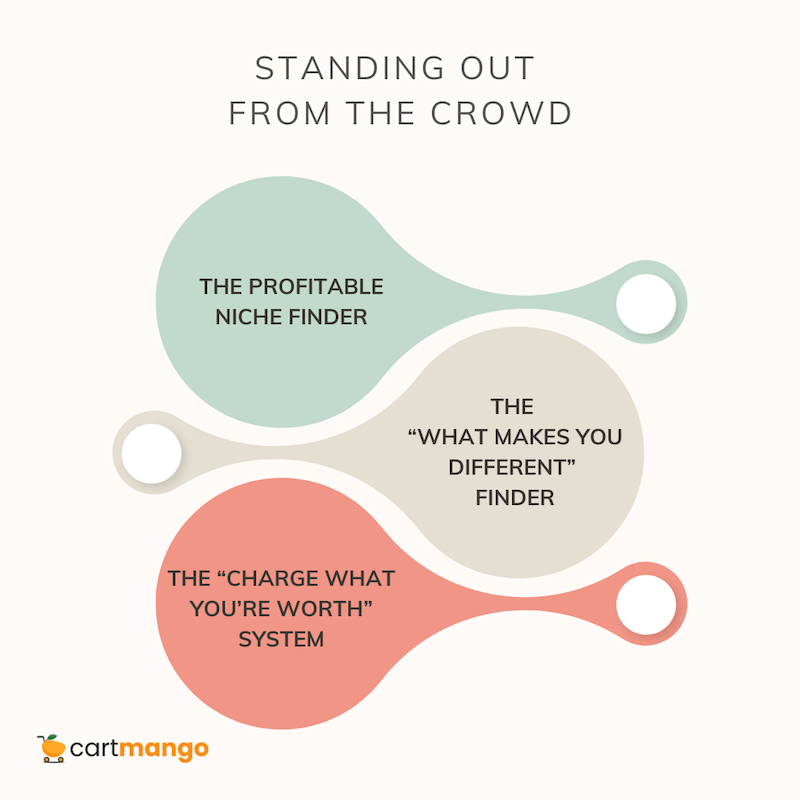
Exercise 5: The Profitable Niche Finder
Being a specialist helps you stand out and charge more. This exercise helps you find a specific area where you can become known as the go-to expert.
Executive coaches charge between $270 to $600 per hour based on experience, and upwards of $1,000 if they are “renowned in their niche field” (Source).
📌 QUICK WIN
List your three most successful client projects. What specific industry, situation, or client type did they all share? This might point to your natural specialty area.
Guide: Niche Rating Chart
| Possible Niche | Do You Like It? (1-5) | Are You Good At It? (1-5) | Do People Need It? (1-5) | How Much Competition? (1-5) | Total Score |
|---|---|---|---|---|---|
| Niche idea 1 | |||||
| Niche idea 2 | |||||
| Niche idea 3 |
Note: For competition, lower numbers (less competition) get higher scores.
Example
BEFORE: Business consultant James offered “strategic planning services for small businesses”
AFTER: James now specializes in “succession planning for family-owned manufacturing businesses with $5-20M in revenue”
His narrower focus allowed James to increase his rates by 75% while getting more referrals within his target market.
⚠️ Common Mistakes
Choosing a niche that’s too broad to be meaningful
Picking a niche just for money without considering if you enjoy it
Selecting a niche with too many established competitors
Niching so narrowly that there aren’t enough potential clients
Implementation Checklist
List 5-7 potential niches based on your experience
Score each option using the chart above
Research the top 2-3 options to check market size
Test market interest with targeted content or conversations
Create a 90-day plan to establish yourself in your chosen niche
–
Exercise 6: The “What Makes You Different” Finder
Standing out from competitors helps you avoid price comparisons. This exercise helps you find and communicate what makes you unique.
📌 QUICK WIN
Google 3 competitors in your field. List what makes your approach different from theirs. Then ask a client what they think makes you different from others they considered.
Guide: Standing Out Chart
| Area | Competitor A | Competitor B | Competitor C | Your Approach | Your Advantage |
|---|---|---|---|---|---|
| Who they help | |||||
| How they work | |||||
| Background | |||||
| Service delivery | |||||
| What they emphasize |
Example
BEFORE: Health coach Sarah’s website looked nearly identical to dozens of other health coaches, focusing on “holistic wellness” and “personalized coaching.”
AFTER: Sarah now talks about her unique “Energy Mapping Protocol” for busy professionals, which she developed during her former career as an emergency room nurse.
By highlighting her unique background and specific method, Sarah attracted clients looking specifically for her evidence-based approach.
⚠️ Common Mistakes
Creating fake differences that clients don’t actually care about
Focusing on tiny details rather than meaningful distinctions
Trying to compete on price instead of value
Copying how others differentiate themselves
Implementation Checklist
Identify your top 3-5 competitors
Look at their websites, offerings, and client focus
List areas where you genuinely approach things differently
Create your “Only I…” statement highlighting your unique approach
Test your difference statement with actual clients for feedback
–
Exercise 7: The “Charge What You’re Worth” System
How you price your services directly reflects your brand position. This exercise helps you set rates that match your value.
According to the Freelancers Union, value-based pricing (charging based on results created rather than hours worked) is the most effective way for independent professionals to increase their income.
📌 QUICK WIN
Calculate the actual business impact of your work for clients. For example, if you help someone save 10 hours per week, multiply that by their hourly value and by 52 weeks to see the annual impact.
Guide: Value Calculator
| Value Type | How to Calculate It | Example | How to Show Proof |
|---|---|---|---|
| Time saved | Hours saved × hourly value × time period | 10 hrs/wk × $100/hr × 52 weeks = $52,000/yr | Client testimonial with numbers |
| Money made | Extra revenue from your work | $5,000/mo × 12 months = $60,000/yr | Before/after figures |
| Money saved | Costs eliminated through your work | 20% reduction in ad spend = $24,000/yr | Expense comparison |
| Risk reduced | Value of problems avoided | Avoiding 1 compliance fine = $50,000 | Industry data on problem costs |
| Feeling better | Less measurable but real value | Less stress, better work-life balance | Client quotes about improvements |
Example
BEFORE: Business coach Alex charged $150/hour based on “what others charge” and struggled to justify his fees when potential clients questioned them.
AFTER: Alex now offers a 6-month program for $12,000 that focuses on helping clients add at least $100,000 in new revenue.
By shifting to value-based pricing with documented results, Alex eliminated price objections and attracted more serious clients.
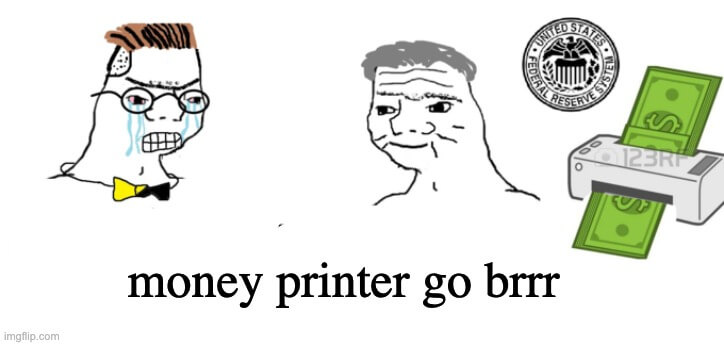
⚠️ Common Mistakes
Setting prices based on your costs rather than client value
Not clearly explaining the return on investment for clients
Charging less because you don’t feel confident
Using hourly rates that penalize you for working efficiently
Implementation Checklist
Document specific value you’ve created for past clients
Create a simple way to calculate ROI for your services
Write clear language explaining your pricing approach
Practice responding to price questions with value statements
Test a value-based pricing structure with new clients
–
=== Part 4: Building Your Brand Identity ===
Now that you’ve clarified how you stand out and how to price your services, it’s time to bring everything together into a cohesive brand identity. While the previous exercises helped you develop individual elements of your brand, this section shows you how to integrate them through a structured workshop approach.
Exercise 8: The Brand Day Workshop
Most independents develop their brand piecemeal over time, leading to inconsistencies. This exercise helps you define all the essential elements of your brand in one focused session.
📌 QUICK WIN
Grab some sticky notes and spend 15 minutes writing down words that describe your brand’s personality. Are you friendly? Professional? Innovative? Reliable? This quick brainstorm starts revealing your brand attributes without overthinking.
Guide: Your DIY Branding Exercise/Workshop
| Workshop Element | What to Do | Why It Matters |
|---|---|---|
| Brand’s mission | Write why your business exists beyond making money | Gives direction to all your marketing messages |
| Core values | List 3-5 principles that guide your business decisions | Helps you attract people who share your personal values |
| Brand persona | Describe your business as if it were a person at a cocktail party | Makes your brand’s personality easier to maintain across customer interactions |
| Target audience | Refine your ideal customer profiles from Exercise 3 | Ensures all branding activities speak to the right people |
| Visual elements | Outline your color preferences, style direction, and potential logo designs | Creates consistency in how people see your company’s brand |
| Brand stands | Define what you’re for and against in your industry | Positions you as a thought leader who doesn’t fear taking sides |
Example
BEFORE: Coach Michael had different messages across his platforms. His website sounded formal, his Instagram was casual, and his small team (an assistant who handled bookings) described his services differently than he did.
AFTER: Michael ran a branding workshop with active participation from his assistant and a trusted colleague. They defined his brand identity using all six exercises. Now everyone’s on the same page about his brand values and company culture.
Michael found that a strong brand identity made it much easier to create consistent content later, as he now had clear guidelines for his voice, topics, and visual presentation.
⚠️ Common Mistakes
Rushing through the process instead of giving each exercise proper time
Creating a brand personality that doesn’t match your natural way of communicating
Skipping the “brand stands against” part (identifying your “bad guys” helps clarify what you stand for)
Developing a brand identity without getting input from at least one other person who can double check your blind spots
Implementation Checklist
Schedule at least half a day for your branding workshop
Gather materials (sticky notes, markers, large paper)
Invite 1-2 people who understand your business to provide feedback
Complete all six exercises in order
Document everything in a simple one-page brand summary
Review your work the next day to see if you or others disagree with anything
Create a plan to align your existing materials with your newly defined brand identity
This comprehensive approach creates a common language about who you are as a brand in the world that will serve as the foundation for all your future content. Having completed this exercise/workshop, you’re now ready to express your clearly defined brand through strategic content creation – which is exactly what we’ll cover next.
–
=== Part 5: Creating Simple, Effective Content ===
With your complete brand identity established, creating content becomes much more straightforward. You now have clear guidelines for what topics to cover, what voice to use, and how to present yourself visually across all platforms.
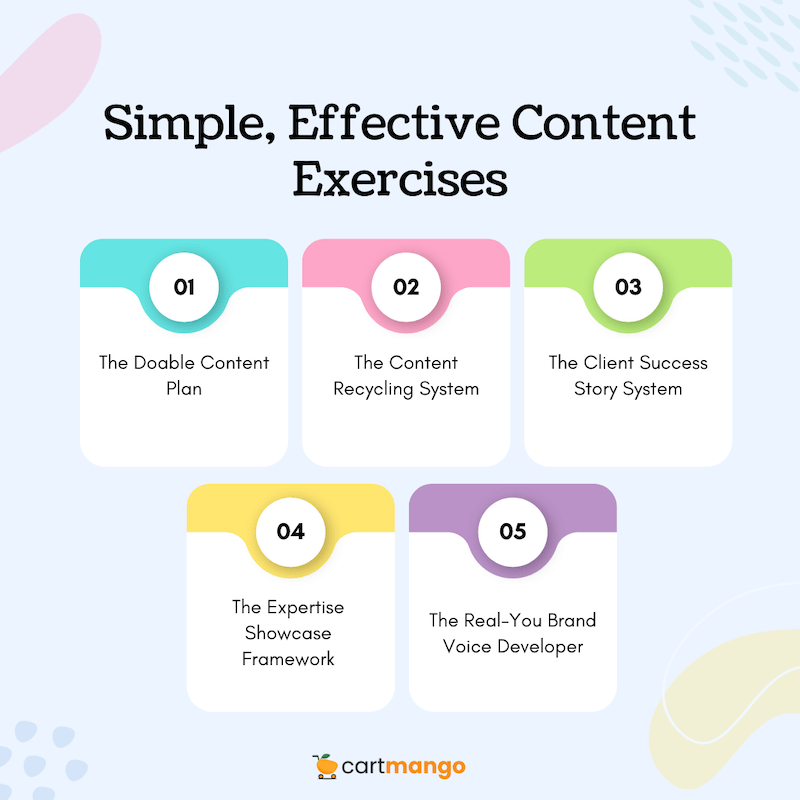
Personal Branding Exercise 9: The Doable Content Plan
Content creation overwhelms many independents. This exercise helps you create a manageable approach that fits your schedule.
Consistency matters more than volume for most creators. A sustainable plan you can actually follow beats an ambitious plan you abandon.
📌 QUICK WIN
Choose just ONE platform where your ideal clients spend time. Commit to posting there consistently before adding any other platforms.
Guide: Minimum Content Plan
| Content Type | Simple Approach | Time Needed | Client Benefit |
|---|---|---|---|
| LinkedIn posts | 2 posts per week, text-only insights | 1.5-2 hours/week | Show expertise, stay visible |
| Email newsletter | 1 email every 2 weeks with useful tip | 3-4 hours/2 weeks | Stay in touch, provide value |
| Blog/article | 1 good piece monthly | 6-8 hours/month | Build SEO, show deep knowledge |
| Video/podcast | Start as a guest on others’ shows | 3-4 hours/appearance | Build credibility through others |
Example
BEFORE: Consultant Ryan tried maintaining a blog, podcast, YouTube channel, and three social platforms. He posted randomly and felt constantly behind.
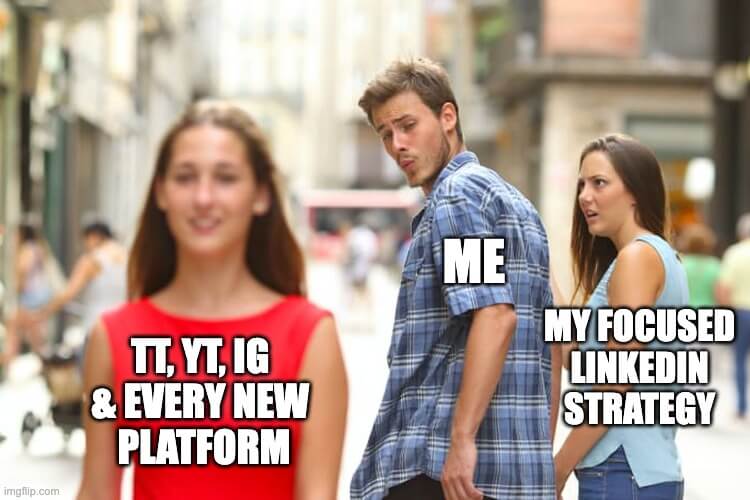
AFTER: Ryan focused only on LinkedIn, posting 3 times weekly with his morning coffee. After 90 days of consistency, his profile views went up 400% and he received 5 direct client inquiries.
⚠️ Common Mistakes
Trying to be active on too many platforms at once
Creating complex content plans you can’t maintain
Focusing on quantity over consistency
Not connecting your content to getting clients
Implementation Checklist
Choose your ONE main platform based on where clients actually are
Set a realistic posting schedule you can maintain with client work
Create a simple content plan with topic ideas
Block specific time in your schedule for content creation
Track which content actually generates client inquiries
–
Exercise 10: The Content Recycling System
This exercise helps you create multiple pieces from a single idea, saving time while maintaining visibility.
When folks reuse their existing content in clever ways, they get 60% more engagement while reducing content creation costs (Source).
📌 QUICK WIN
Take your most successful piece of content and break it into 5 smaller pieces for other platforms or formats.
Guide: Content Multiplier
| Original Content | Platform 1 | Platform 2 | Platform 3 | Platform 4 |
|---|---|---|---|---|
| Long blog post | LinkedIn text post | Email newsletter | Twitter/X thread | Short video |
| Client success story | Quote graphic | Email about results | LinkedIn article | Before/after post |
| Podcast interview | Quote images | Email with key points | LinkedIn carousel | Blog summary |
Example
BEFORE: Course creator Mia spent 8 hours creating new content from scratch each week, leaving little time for other business activities.
AFTER: Mia now spends 6-8 hours creating one good piece monthly, then 2-3 hours weekly turning it into multiple formats. Her content output increased while her creation time dropped by 50%.
⚠️ Common Mistakes
Creating each piece of content from scratch
Posting identical content on different platforms
Overlooking old content that could be updated or reused
Spending too much time making content perfect rather than publishing consistently
Implementation Checklist
Identify 3-5 core topics that showcase your expertise
Create one “cornerstone” piece on each topic
Break each cornerstone into 5-10 smaller content pieces
Adapt each piece to fit different platform requirements
Schedule the content distribution over several weeks
–
Exercise 11: The Client Success Story System
Client stories are more powerful than self-promotion. This exercise helps you document client transformations effectively.
📌 QUICK WIN
Call your favorite client and ask: “What’s the biggest change you’ve experienced since we started working together?” Record their answer (with permission) for a quick testimonial.
Guide: Success Story Format
| Story Part | What to Include | Example |
|---|---|---|
| Client situation | Specific challenges they faced | “Jane’s coaching business was stuck at $4K months despite working 60+ hours weekly” |
| Previous attempts | What they tried before you | “She had invested in three online courses and hired a virtual assistant” |
| Your approach | How you helped differently | “We implemented my 3-part client attraction system” |
| Real results | Actual outcomes with numbers | “Within 90 days, Jane signed 4 new clients at her premium rate” |
| Client words | Direct quote in their words | “For the first time, I’m earning what I’m worth while working fewer hours” |
Example
BEFORE: Consultant David’s website had a generic “Testimonials” page with vague quotes like “David was great to work with” and “Highly recommended!”
AFTER: David now features detailed case studies for each client type he serves, with specific challenges, approaches, and measurable results.
His website contact form submissions doubled after adding these detailed success stories.
⚠️ Common Mistakes
Telling client stories without permission
Focusing on your process rather than client outcomes
Using generic praise instead of specific results
Creating case studies that are too long for anyone to read
Implementation Checklist
Create a simple template for collecting client success stories
Reach out to 3-5 past clients for permission to share their stories
Develop each story with the key elements from the framework
Create different versions for various platforms (short/long)
Update your website and materials with these stories
–
Exercise 12: The Expertise Showcase Framework
Showing expertise works better than claiming it. This exercise helps you demonstrate your knowledge in ways that attract clients.
Demonstrating expertise through helpful content is one of the most effective ways to build trust with potential clients.
📌 QUICK WIN
Write down the top 3 questions you get asked by prospective clients. Create a short post or video answering each one.
Guide: Expertise Content Types
| Content Type | Format | Topic Example | Next Step for Reader |
|---|---|---|---|
| How-to guide | Step-by-step article | “How to Run Your First Webinar Without Technical Disasters” | “Need help with your webinar strategy? Let’s talk.” |
| Myth-busting | Social media carousel | “5 Pricing Myths Keeping Consultants Broke” | “Want to price profitably? Book a pricing call.” |
| Case study | Video or article | “How [Client] Doubled Their Email Open Rates in 30 Days” | “Want similar results? Here’s how to work with me.” |
| Tool comparison | Checklist or guide | “Project Management Tools: Which One Is Right for Your Coaching Business?” | “Get my free tool selection guide.” |
Example
BEFORE: Marketing consultant Blake’s content consisted mostly of motivational quotes and general advice like “Don’t forget to post consistently on social media!”
AFTER: Blake now creates detailed breakdowns of specific marketing campaigns, explaining strategies, showing examples, and sharing results.
Her content now generates consultation requests rather than just likes and comments.
⚠️ Common Mistakes
Sharing only basic tips anyone could find with a quick Google search
Holding back too much information for fear of giving away your value
Creating content that showcases technical knowledge but ignores client needs
Forgetting to include a clear next step for interested readers
Implementation Checklist
List the top 5-7 topics that showcase your specific expertise
Create a content plan using different formats from the chart
Include actual examples and specific steps in each piece
Add a relevant call-to-action to every content piece
Track which expertise topics generate the most client interest
–
Exercise 13: The Real-You Brand Voice Developer
Your unique way of communicating sets you apart. This exercise helps you develop a consistent, authentic voice.
📌 QUICK WIN
Record yourself explaining your work to a friend, then transcribe it. Notice the natural phrases and terms you use when not trying to sound “professional.”
Guide: Finding Your Voice
| Voice Feature | Options (Pick One) | How You Naturally Talk | Your Brand Voice |
|---|---|---|---|
| Overall tone | Formal vs. Casual | ||
| Humor level | Serious vs. Witty | ||
| Detail level | Brief vs. Detailed | ||
| Word choice | Simple vs. Technical | ||
| Perspective | Personal vs. Objective |
Example
BEFORE: Financial coach Raj wrote in a stiff, formal tone: “I assist individuals in optimizing their financial strategies to facilitate the achievement of their monetary objectives.”
AFTER: Raj embraced his natural conversational style: “I help normal people stop freaking out about money and actually build wealth—even if they’re not making six figures.”
His email open rates increased from 22% to 38% after adopting a more authentic voice.
⚠️ Common Mistakes
Adopting an “expert voice” that doesn’t match how you actually talk
Copying someone else’s communication style
Being inconsistent in your tone across different platforms
Sounding too casual for your specific audience (or too formal)
Implementation Checklist
Identify words and phrases you naturally use when explaining your work
Create a simple brand voice guide using the chart above
Review recent content to align with your authentic voice
Ask a friend to flag when your writing doesn’t sound like “you”
Test different voice elements to see what resonates with clients
–
=== Part 6: Getting Noticed by the Right People ===
Exercise 14: The Strategic Visibility Plan
Being seen by the right people matters more than being seen by many people. This exercise helps you get visible in strategic ways.
📌 QUICK WIN
Make a list of 3 podcasts your ideal clients probably listen to. Reach out to one this week with a specific pitch about the value you could provide their audience.
Guide: Visibility Opportunity Rater
| Opportunity | Right Audience? (1-5) | Effort Needed (1-5) | Potential Impact (1-5) | Total Score | Priority |
|---|---|---|---|---|---|
| Guest podcasting | |||||
| Speaking at events | |||||
| Guest blogging | |||||
| Online webinars | |||||
| Industry groups |
Note: For effort, lower numbers (less effort) receive higher scores
Example
BEFORE: Coach Michelle tried to increase visibility by posting daily across five different social platforms, getting minimal engagement and no client inquiries.
AFTER: Michelle focused on appearing as a guest on 3 podcasts her ideal clients listened to and becoming active in 2 specific Facebook groups. Within 60 days, she received 7 direct client inquiries from these focused efforts.
⚠️ COMMON MISTAKES
Pursuing visibility opportunities without considering audience fit
Saying yes to any opportunity without evaluating the potential return
Focusing on reach (large numbers) rather than relevance
Spreading yourself too thin across too many visibility channels
Implementation Checklist
Identify where your ideal clients already pay attention
Rate potential visibility opportunities using the chart
Create specific pitches for your top 3-5 opportunities
Schedule regular time for strategic visibility activities
Track which channels actually generate client inquiries
–
Exercise 15: The Relationship Builder System
Strategic relationships can dramatically expand your reach. This exercise helps you build mutually beneficial partnerships.
📌 QUICK WIN
Identify 3 professionals who serve the same clients as you but offer complementary (non-competing) services. Reach out to suggest a coffee chat about how you might help each other.
Guide: Relationship Types
| Relationship Type | How You Both Benefit | How to Reach Out | How to Keep It Going |
|---|---|---|---|
| Referral partners | Send clients to each other | Direct message sharing client results | Monthly check-in with potential referrals |
| Content collaborators | Share audience access | Suggest specific joint content | Promote their content regularly |
| Joint venture partners | Create shared offerings | Share specific opportunity with clear terms | Quarterly strategy sessions |
| Industry connectors | Expand each other’s networks | Ask for specific introductions | Make valuable connections first |
| Client sources | They refer, you deliver results | Case study of previous client success | Regular results updates |
Example
BEFORE: Consultant Thomas tried cold outreach for new clients, spending hours on sales calls with poor conversion rates.
AFTER: Thomas built relationships with 5 strategic partners who regularly refer ideal clients to him. These warm leads convert at 75%, compared to 15% from cold outreach.
He also created a simple system that encourages happy clients to introduce him to others who might need his help.
⚠️ COMMON MISTAKES
Approaching potential partners with “what can you do for me?” attitude
Creating overly complicated partnership arrangements
Neglecting to nurture relationships after initial connection
Making it hard for others to refer clients to you
Implementation Checklist
Map your current network for potential strategic relationships
Identify gaps where new connections could benefit your business
Create a simple outreach template for each relationship type
Develop a system for tracking and nurturing key relationships
Create clear, simple processes for giving and receiving referrals
–
=== Part 7: Turning Your Brand Into Actual Clients ===
Exercise 16: The Lead Generation Bridge
Your personal brand should directly connect to client acquisition. This exercise helps you convert brand visibility into actual leads.
📌 QUICK WIN
Create a simple, helpful PDF guide that solves one specific problem for your ideal client. Offer it at the end of your most popular content pieces.
Guide: Content-to-Client Path
| Content Type | Free Resource | Follow-Up Emails | Next Step Offer |
|---|---|---|---|
| How-to content | Problem-specific checklist | 3 emails expanding on the topic | Free consultation offer |
| Expert content | Short video training | 5-day challenge or email series | Strategy session invitation |
| Case studies | Results calculator | Before/after examples with steps | Application for similar results |
| Comparison content | Decision guide | Emails addressing common questions | Decision-making call offer |
Example
BEFORE: Coach Jessica created great content but had no system for turning readers into leads. She hoped people would somehow find her “Work With Me” page.
AFTER: Jessica now offers a relevant free resource within each content piece. Her email list grew from 200 to 1,500 in six months, and she converts 10% of subscribers into discovery calls.
⚠️ COMMON MISTAKES
Creating content without clear paths to becoming a client
Offering free resources that don’t connect to your services
Having weak or non-existent follow-up emails
Making the process of working with you unnecessarily complicated
Implementation Checklist
Create 2-3 free resources aligned with your core services
Develop a simple follow-up email sequence for each resource
Add clear calls-to-action in your content linking to free resources
Create a streamlined process for booking calls or consultations
Track conversion rates at each step to identify improvements
–
Making These Personal Branding Exercises Work in Real Life
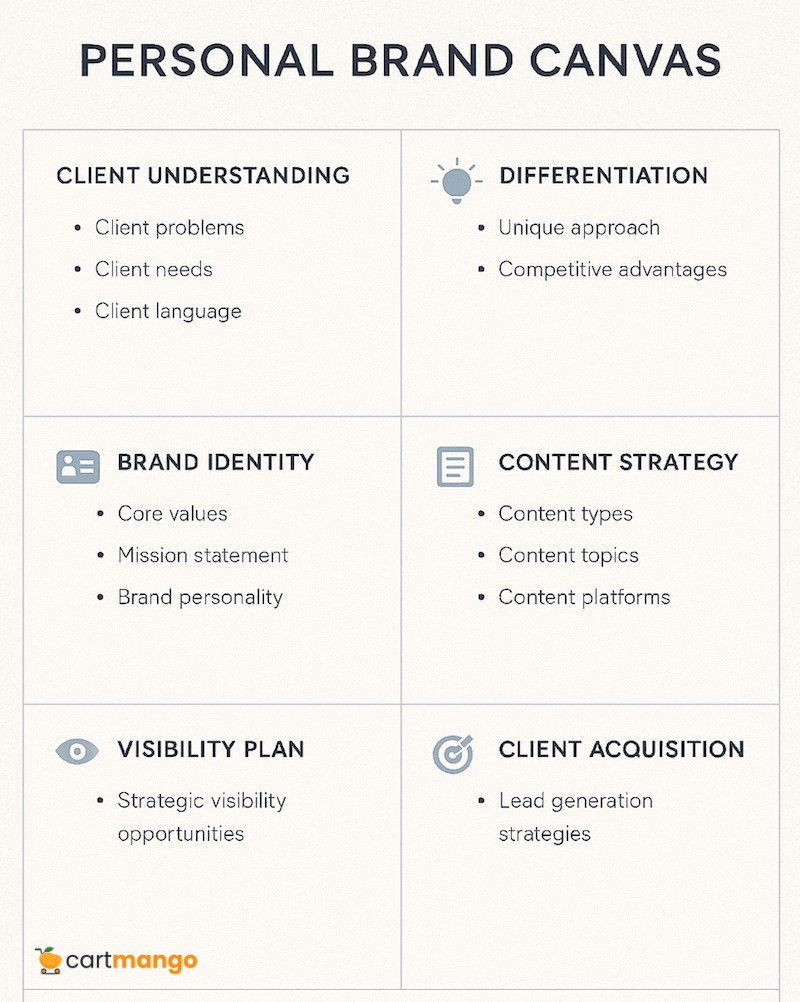
Building a strong personal brand isn’t about creating a perfect image.
It’s about consistently showing potential clients how you can help them solve specific problems.
By implementing these exercises, you’re creating more than just a brand—you’re building a client attraction system that will bring you opportunities with less effort over time.
Your personal brand evolves as your business grows. Plan to review your brand quarterly to refine your message, update your client language, and adjust your content strategy.
The most successful independent creators aren’t necessarily the most talented—they’re the ones who consistently implement strategic brand building activities that connect directly to getting clients.
Start with the exercises most relevant to your current business challenges, track your results, and adjust your approach based on what works for your specific clients and market.
Related
- Gumroad vs Sellfy: The Vendor Lock-in Cage (2025)
- Gumroad vs Payhip: The Hidden Trap for Creators (2025)
- ThriveCart vs SamCart – The Subscription Hostage Trap (2025)
- 8 ThriveCart Alternatives & The Lifetime Pricing Paradox (2025)
- 8 SamCart alternatives + Subscription hostage (2025)
- The GENTLE Method: Soft marketing for creators
- How Far in Advance Should You Promote a Webinar?
- The SAVINGS Method: The Productivity Improvement Plan for Creators
- 9 Questions to Ask: How to Hire a Digital Marketing Agency
- Decision That Costs Millions? Marketing Funnel vs Customer Journey
